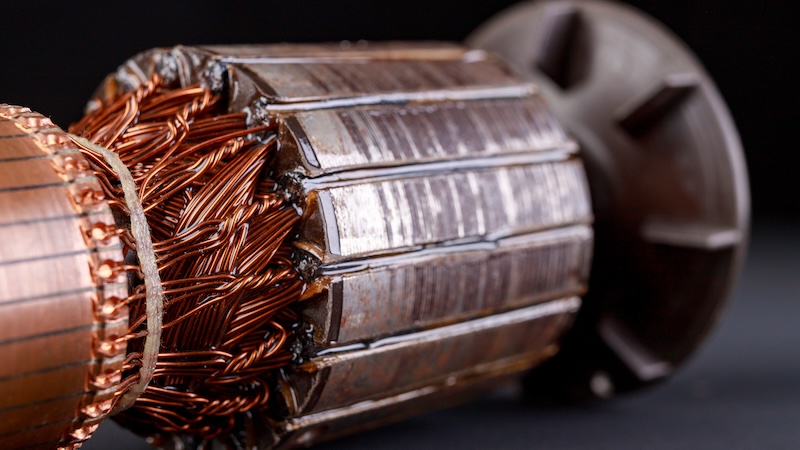
In a car, an electric motor converts electrical energy into mechanical energy to power the vehicle. We’ll tell you how exactly an electric motor works.
An electric motor draws its energy from a battery made up of several cells. These store electrical energy in chemical form and can release it when needed. The performance of a battery in turn determines the range and performance of an electric car.
How does an electric motor work?
A battery can transmit electrical energy to a motor via so-called power electronics. This system includes an inverter and control devices that convert DC energy into AC energy required for the motor.
There are different types of electric motors used in electric cars. Among them: the DC motor, the AC induction motor and the permanent magnet synchronous motor. All of these types of engines have certain advantages and disadvantages in terms of efficiency, cost and performance.
Electric motors are based on the principle of electromagnetism. Inside the motor there are windings through which the electric current flows and creates a magnetic field. This magnetic field interacts with the magnetic rotor located within the windings, producing rotational motion. This is used to drive the wheels of a vehicle.
Another special feature of electric motors in cars is the so-called regenerative brake. An electric motor is used as a generator to convert kinetic energy during braking back into electrical energy and store it in the battery. This can increase the range and efficiency of vehicles.
The advantages of an electric motor
The power electronics and control units in the vehicle regulate the speed and torque of the engine. Sensors monitor operating conditions and ensure the engine is operating efficiently and safely.
Electric motors have several advantages compared to classic combustion engines. They cause no direct emissions, are quieter and sometimes more efficient. Because the efficiency of an electric motor is according to TÜV significantly higher.
Specifically, this means: A large part of the electrical energy supplied is converted into mechanical energy. While an internal combustion engine only achieves an efficiency of 30 percent on average, the efficiency of electric motors is up to 80 percent.
As battery technology and electric motors continue to develop, electric vehicles are becoming increasingly more powerful and attractive to the mass market.
Also interesting:
- “Virtual power plant”: This is how electric cars can relieve the burden on the power grid
- Researchers develop battery with supercapacitors made from chicken fat
- Synhelion opens the first industrial plant for the production of solar fuels
- Do wind turbines cause drought?
The article How does an electric motor actually work? by Fabian Peters first appeared on BASIC thinking. Follow us too Facebook, Twitter and Instagram.